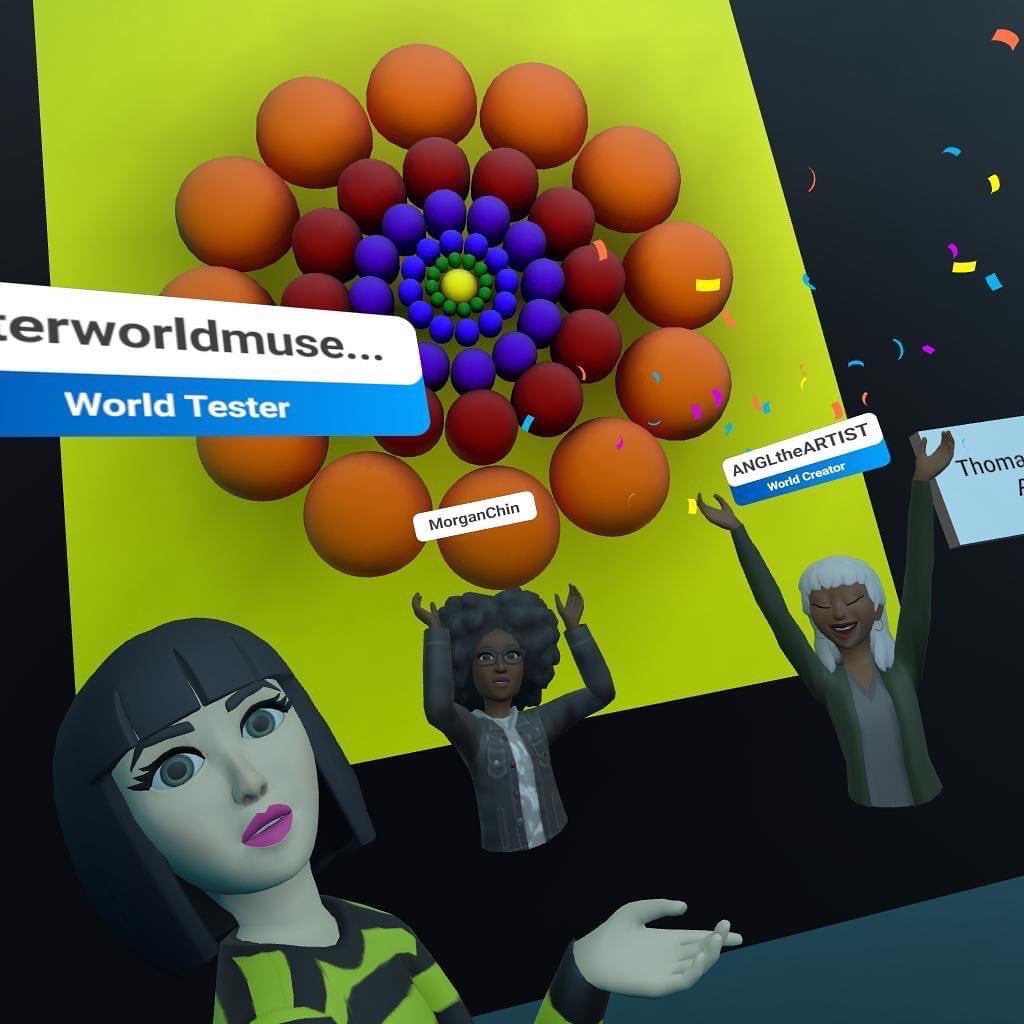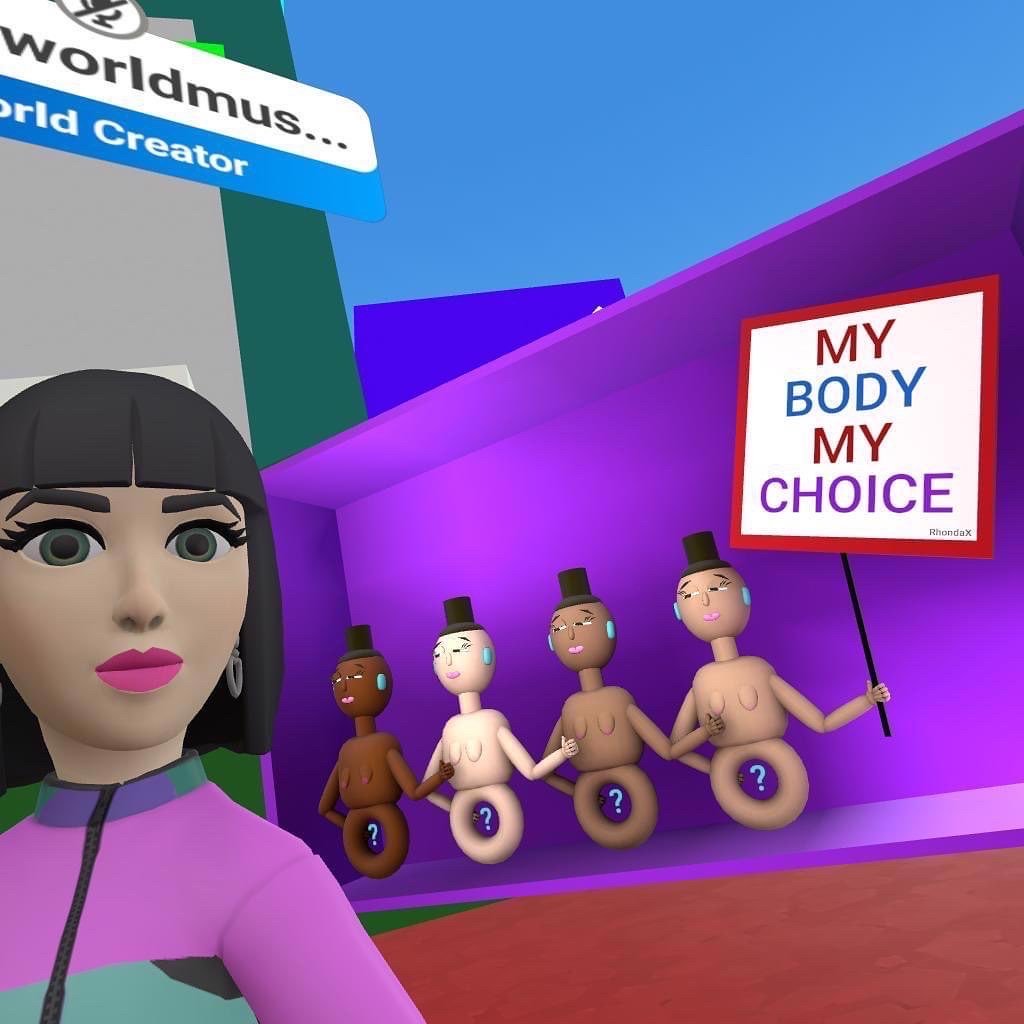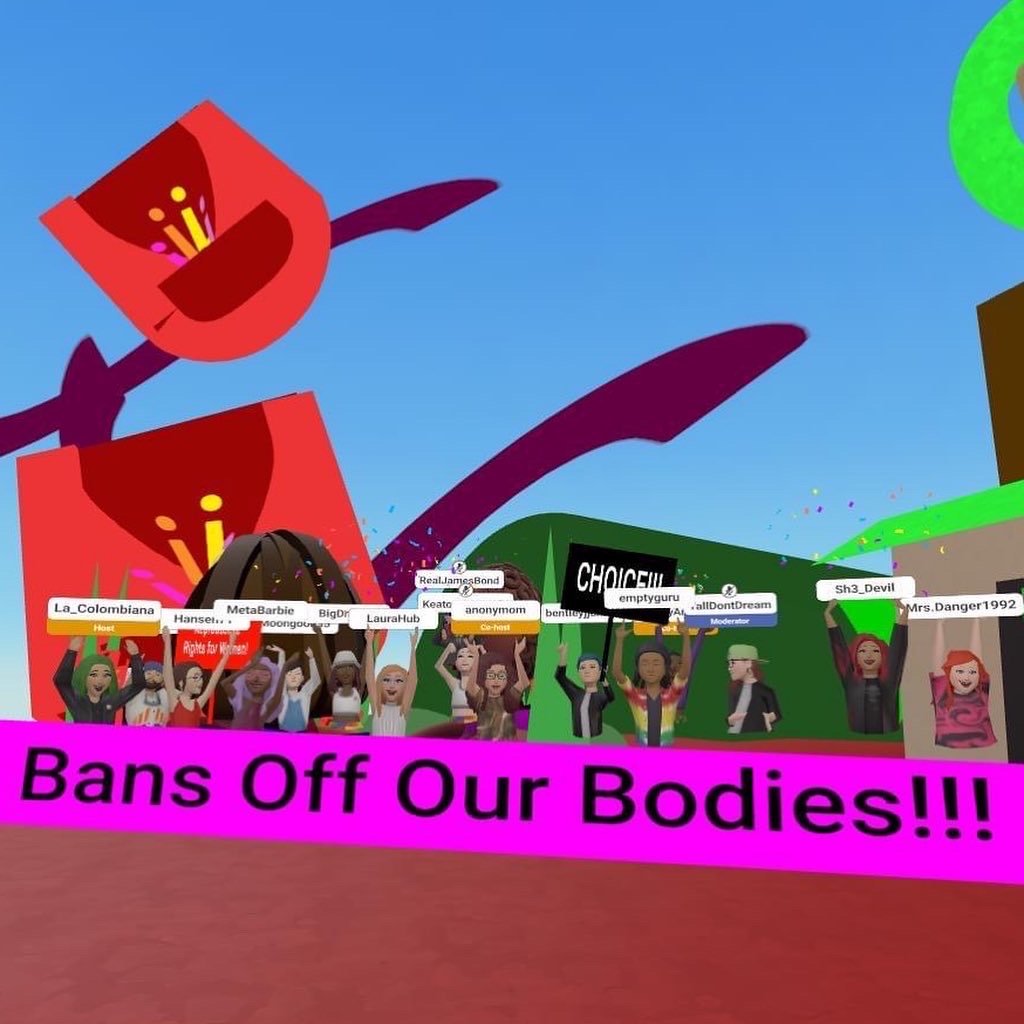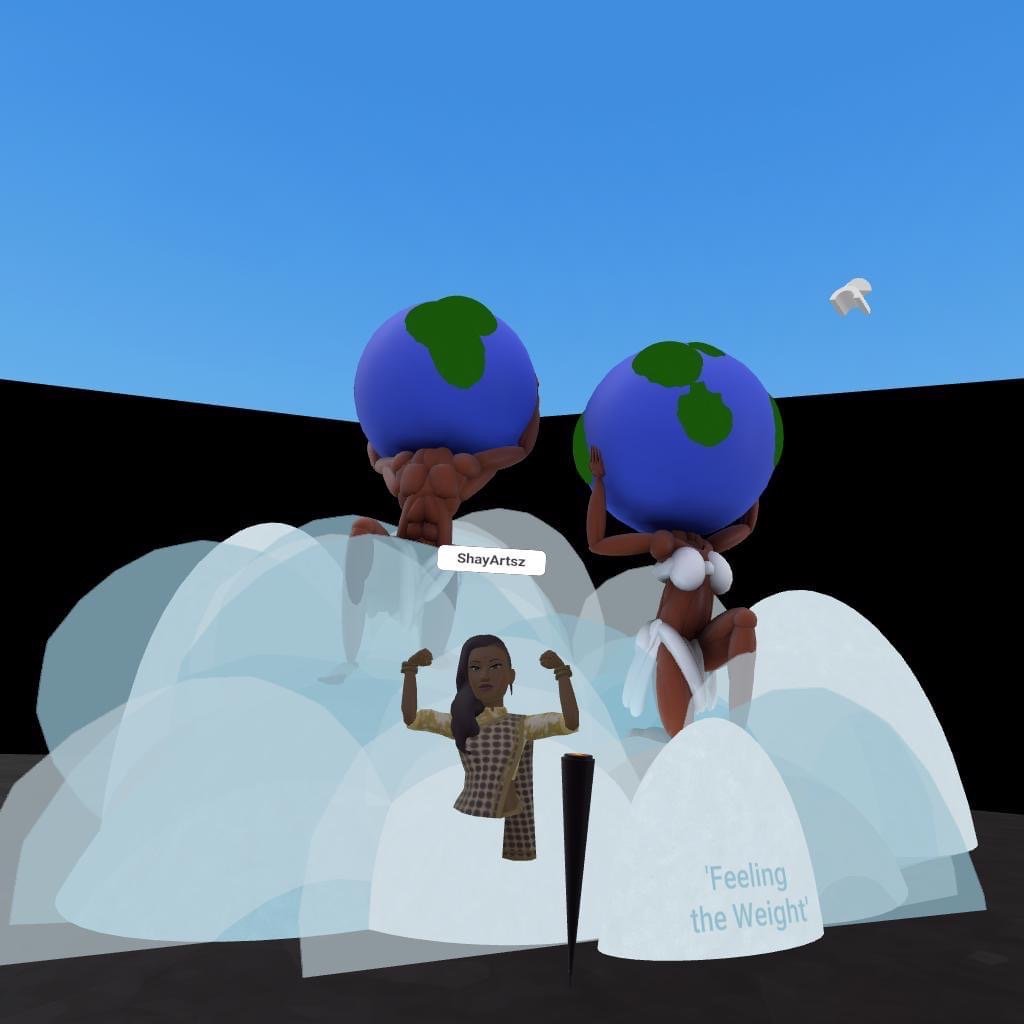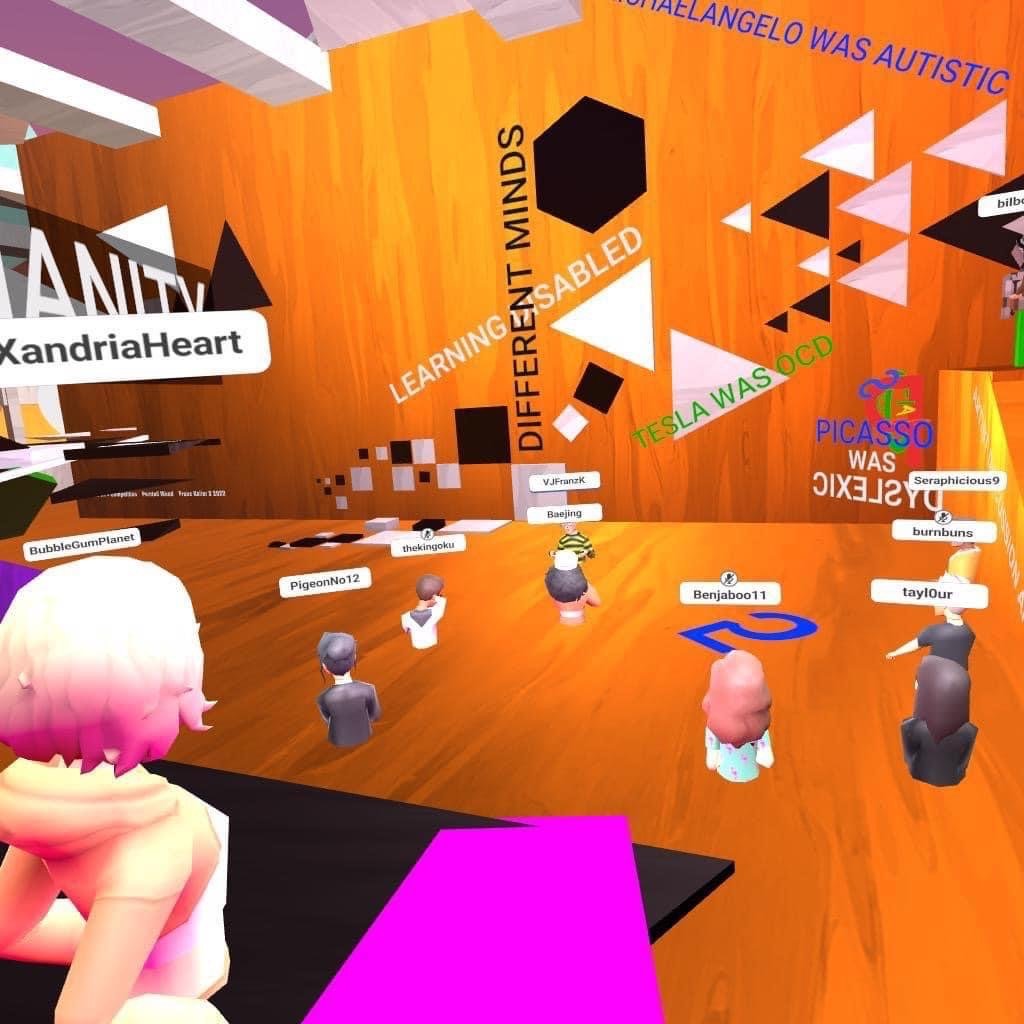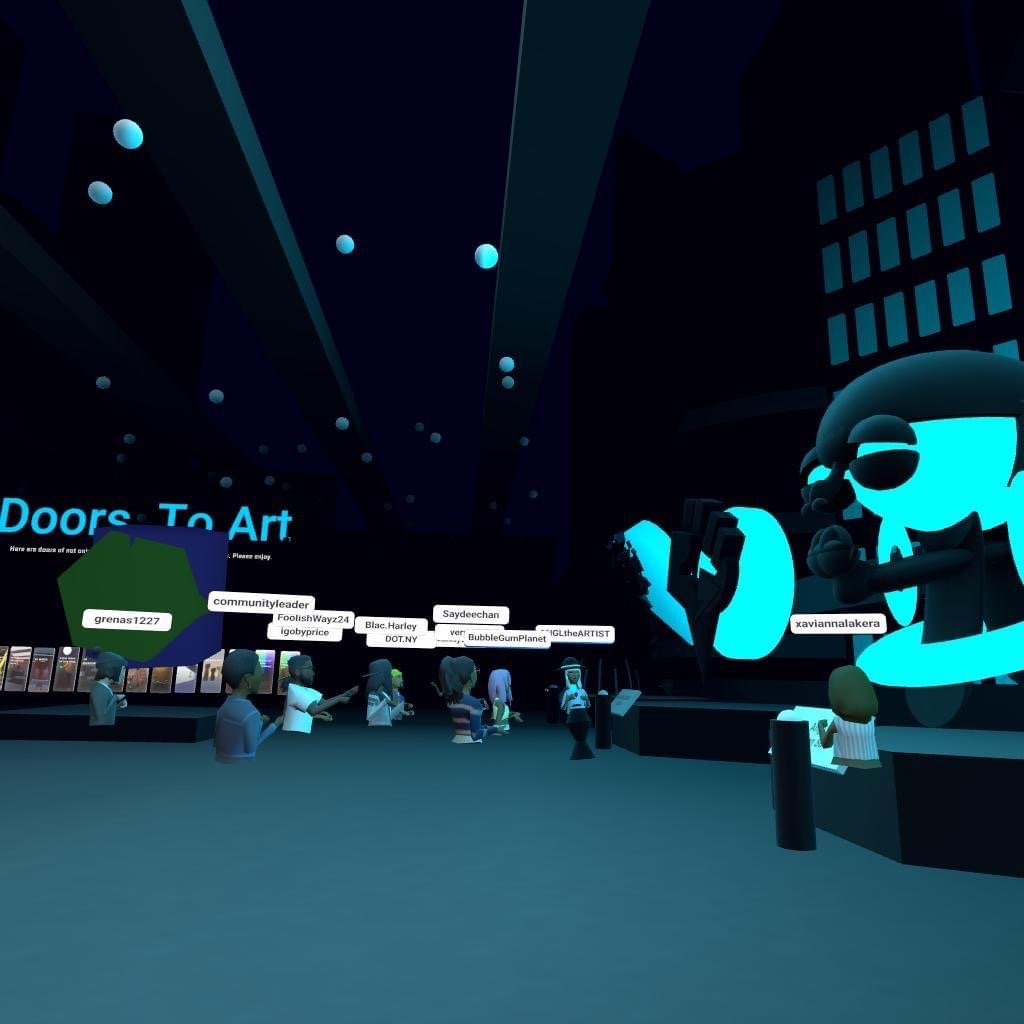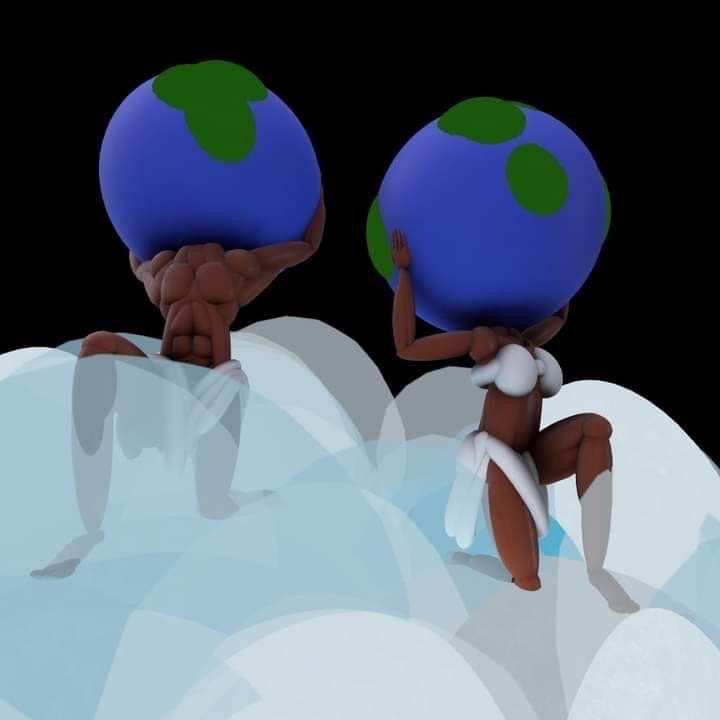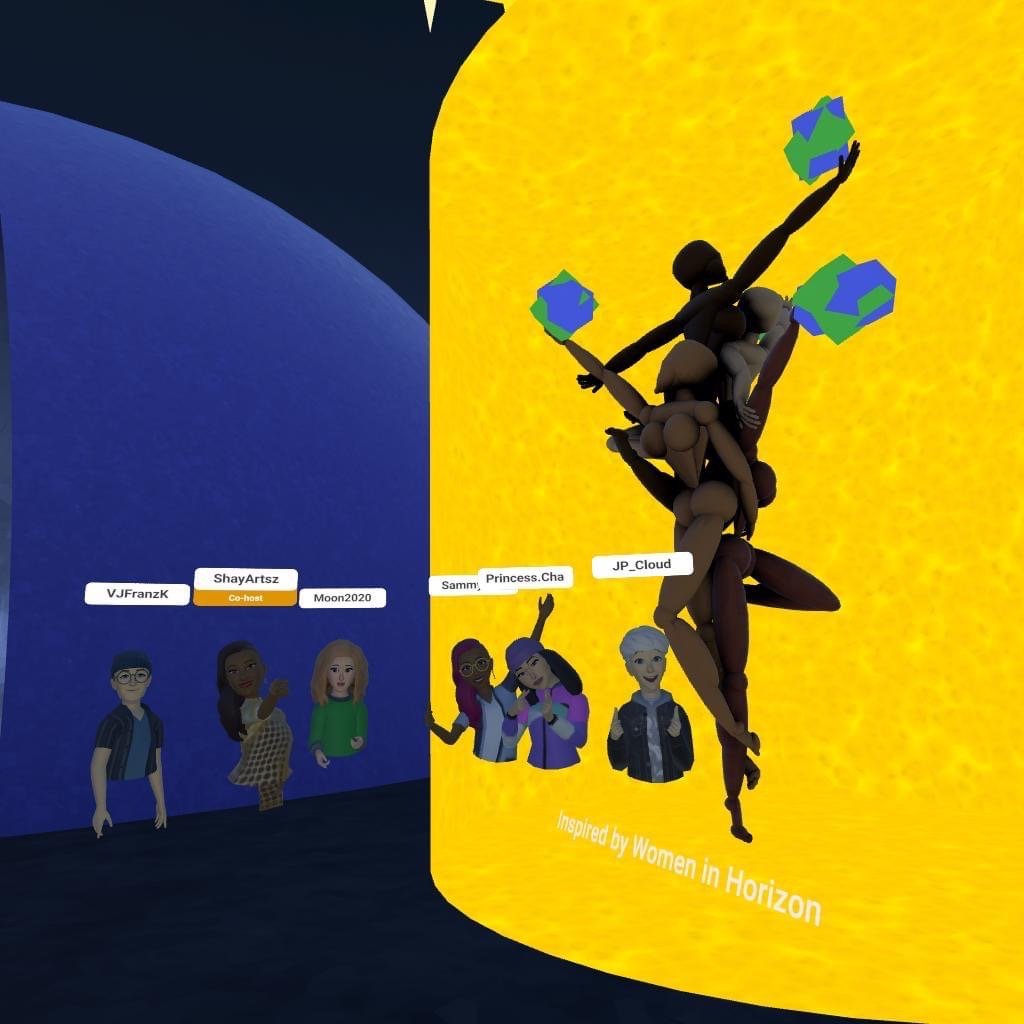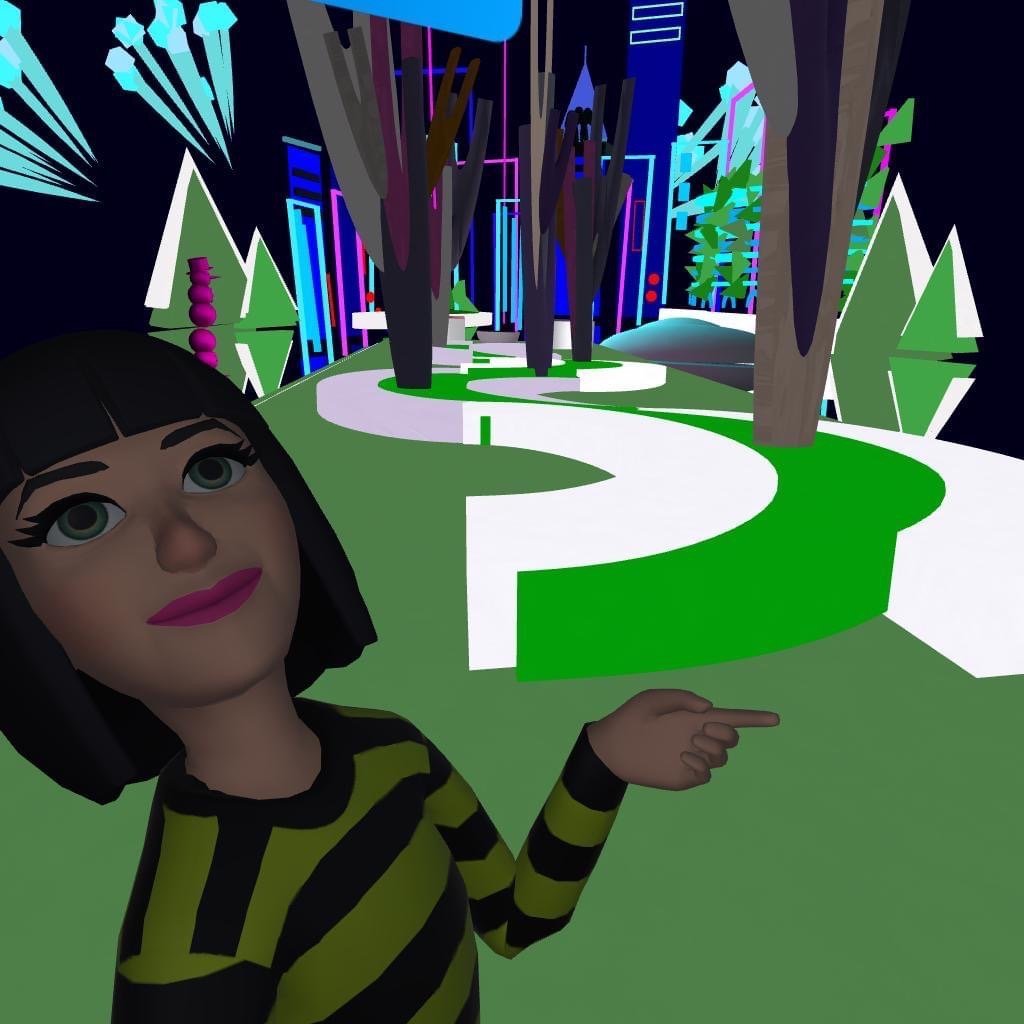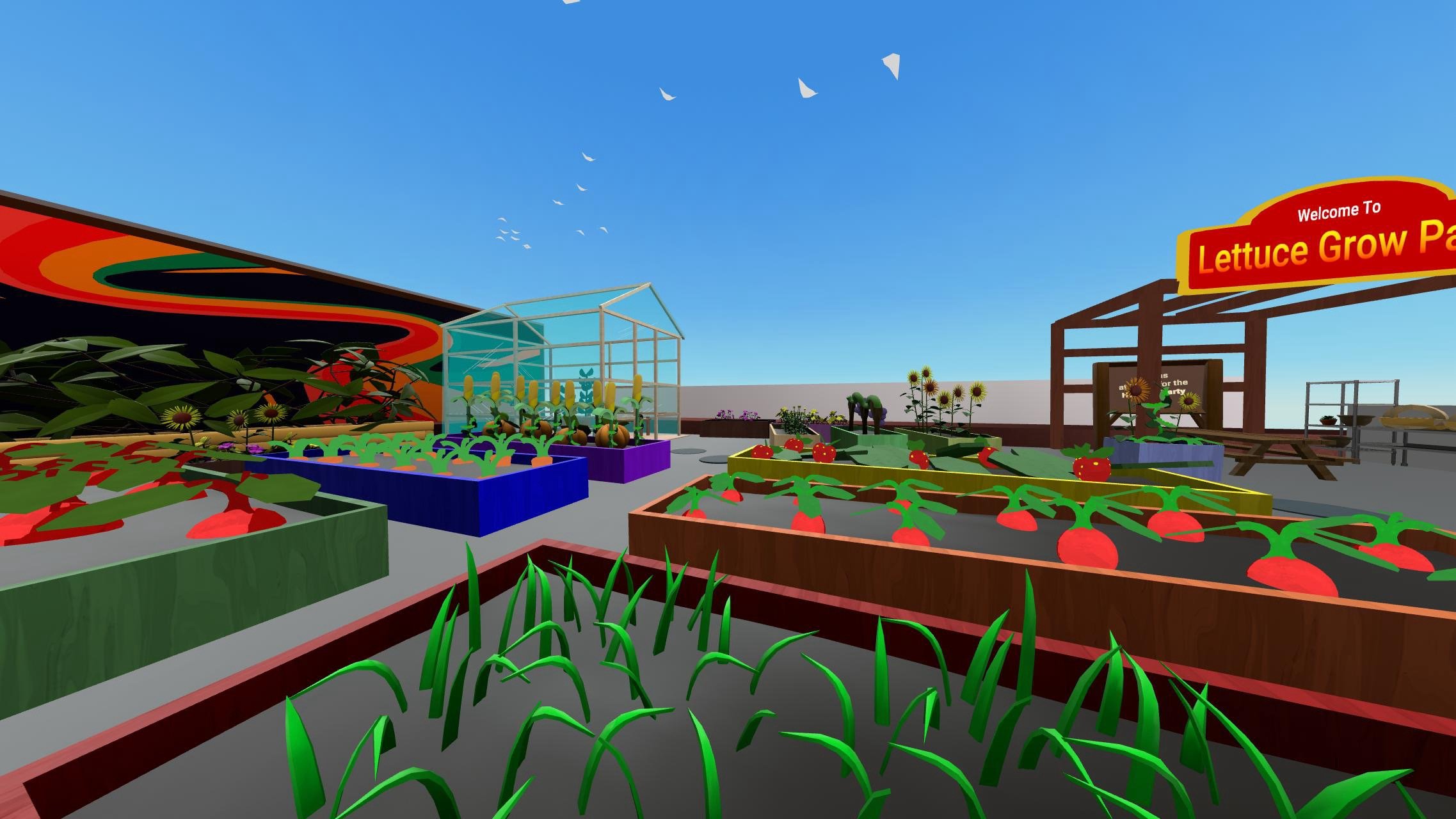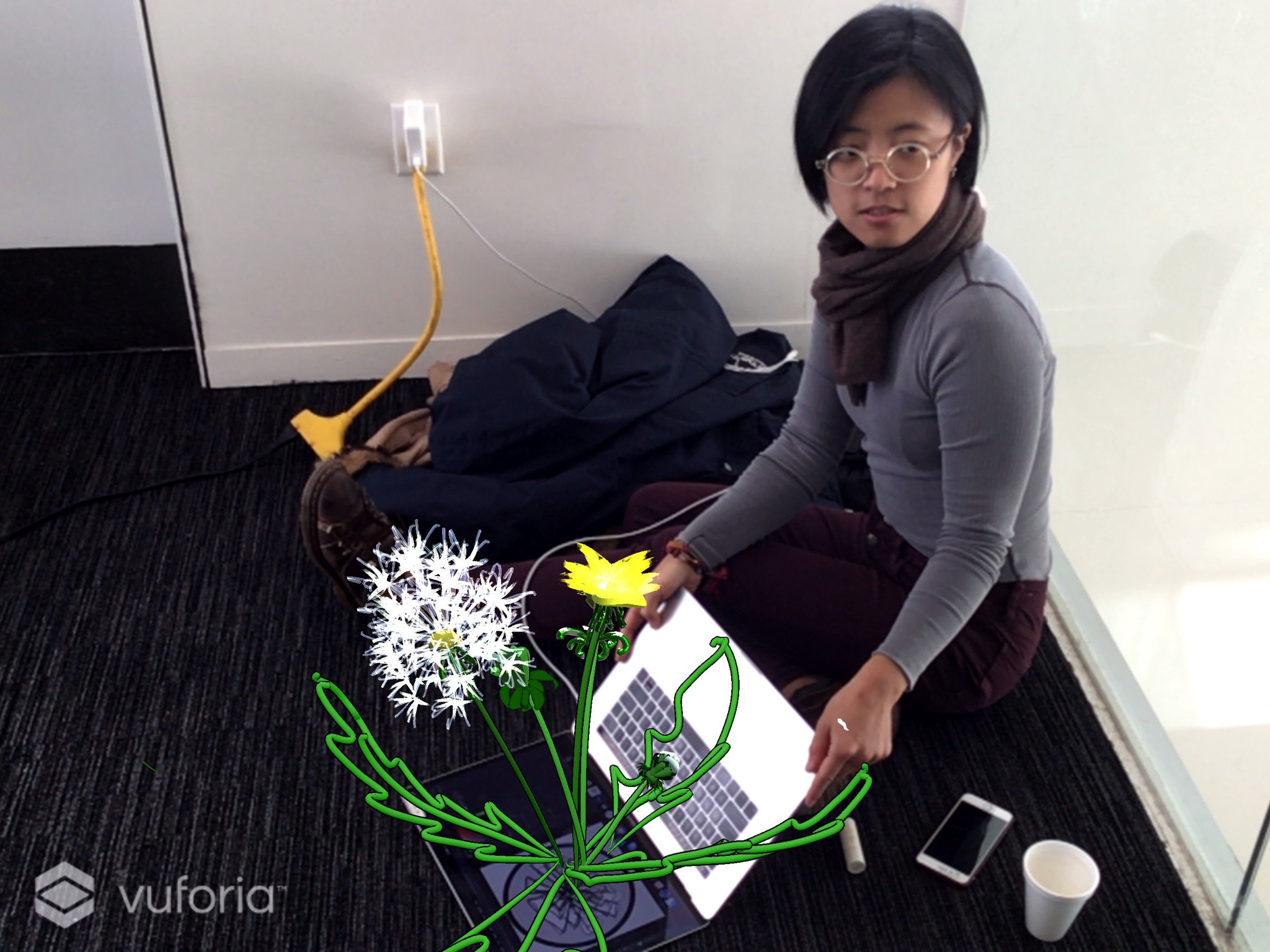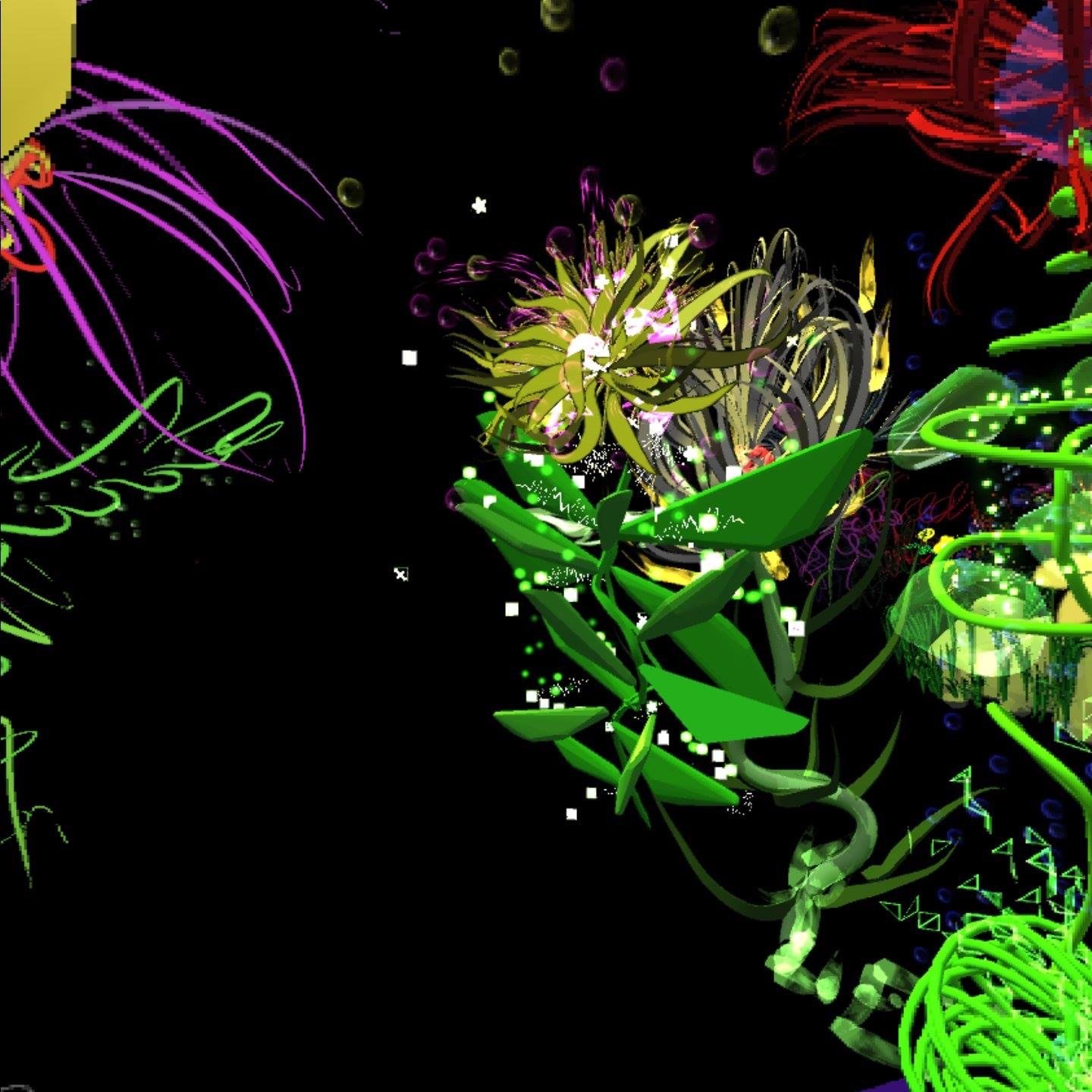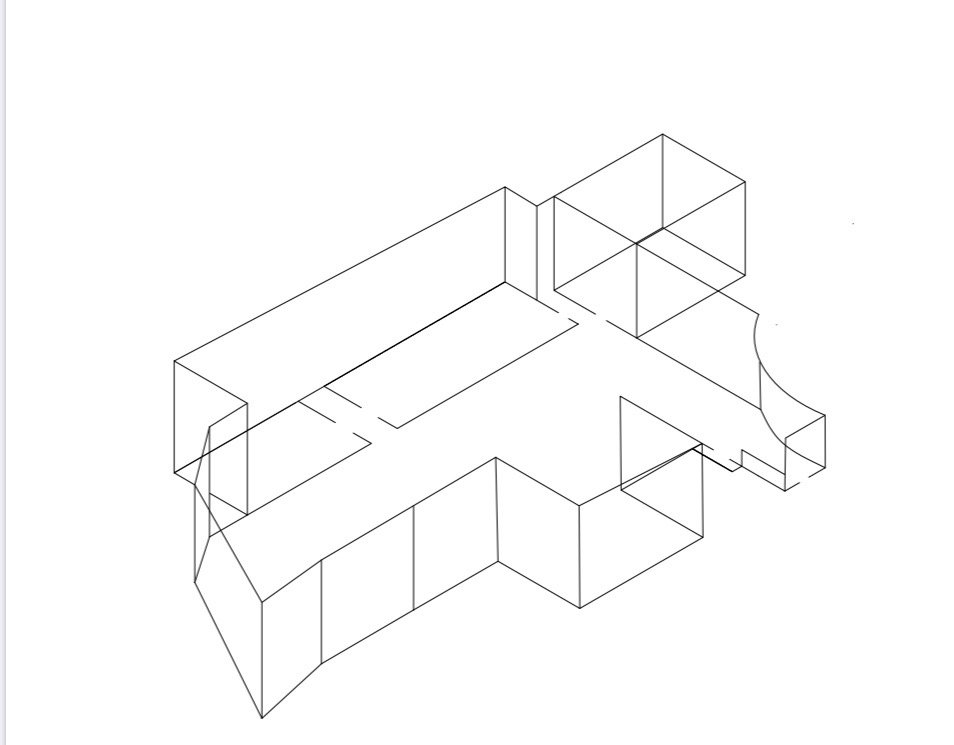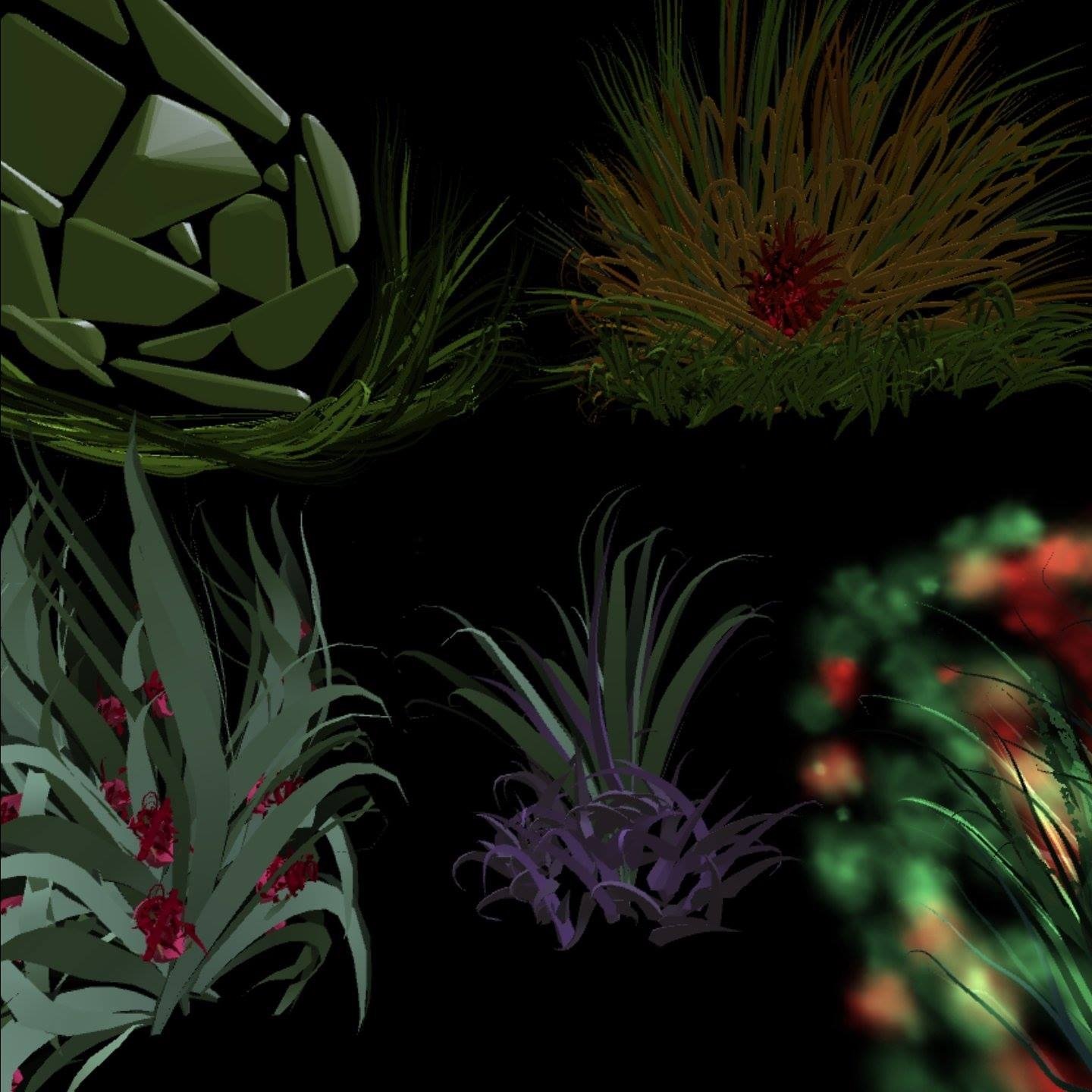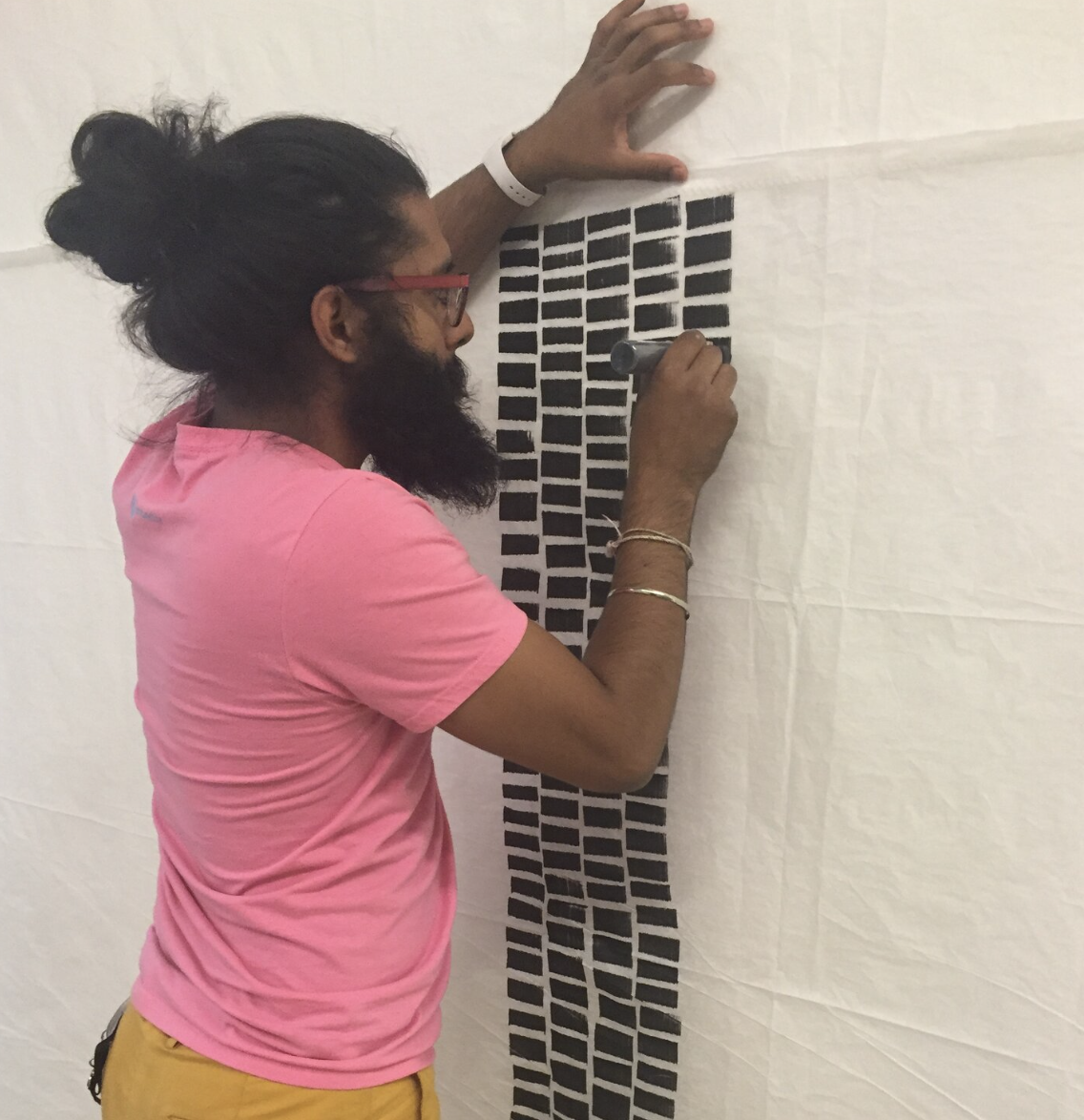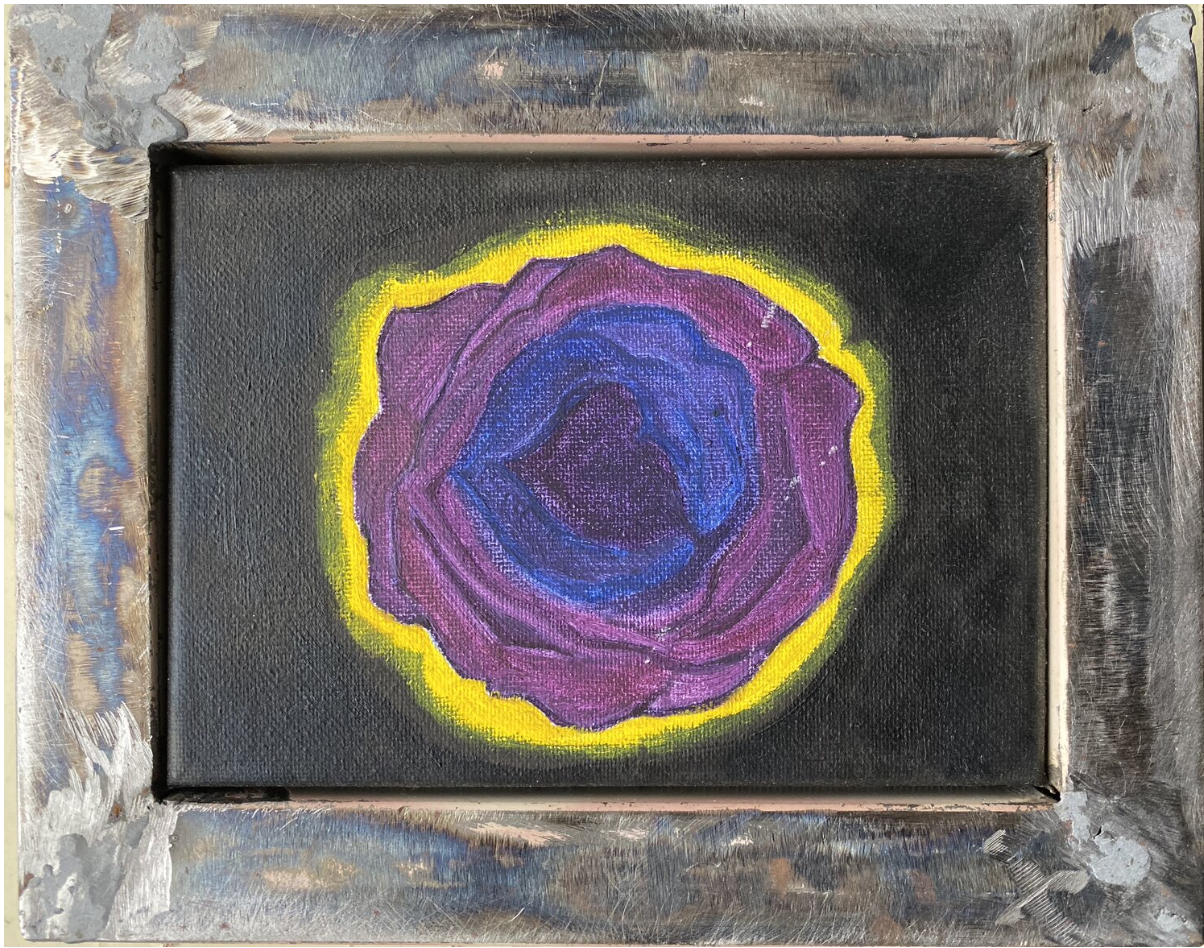VR Garden Posts 2016 - 2019:
VR Garden is a future Oculus Quest Activity, and a Global Public Art Participatory Drawing Experince. It's purpose it to contibute to 1 Billion Oculus users, and to help make a better world through creating an inclusive, diverse, empathetic space that promotes climate justice and wellness through the activies of participatory drawing in a VR Garden, and an Oculus Quest game narrative that employs creative problem solving, STEM/STEAM, and drawing in Facebook Spaces.
The Oculus Experience will be designed and creaed entirely in Quill, for the Oculus Quest. VR Garden will be a series of Game Narratives and Adventures for up to 4 friends inside of Facebook Spaces. Participants will discover edible, medicinal, ad poisounous plants and need to use them in situations based on raising empathy and inclusion, while re-propigating and polinating plants. Two Bees will be their guides as the players navigate diffrent climate-change affected envoronments. This STEM/STEAM Action Experience is intended to ignite empathy, draw, take selfies in Facebook Spaces while problem solving relevant issues of today, and engage in real world action to promote a healthier community and future world.
*During 2019 I will be taking the Udemy Course: Unity 3D Design so my next VR Garden Game is created in Unity. https://www.udemy.com/unitycourse2/
Pitch-deck created in Oculus Go.
April 2019: VR Garden started with a few drawings of flowers in Virtual Reality (VR). VR Garden was my first post on Poly, August 3, 2017. A member of my local community generously loaned Better World Museum an Oculus Rift for one year. I downloaded Tilt Brush and immediately loved drawing in VR. The controller became an extension of my hands, which at times have felt less powerful. Drawing VR Flowers made me feel free like I had giant wings, I felt actively engaged and happy. Plus, I never ran out of paint or space. My canvas was now as large as the world!
I knew I wanted to share this positive feeling with others, but it was more.. I felt a deep obligation to share it with as many people possible. I knew right away that this was a powerful tool to create change and connect communities.
Feeling happy, I drew more flowers. Once uploaded, learned I was able to share a link to anyone in the world on social media. The file had an option for people to ReMix the drawing. I loved that idea! Often feeling isolated, and not included in professional, social, and community activities made me strive to facilitate creative opportunities to include more people. I try my best to make each voice feel valued, especially members of vulnerable communities. I saw Tilt Brush’s ReMix option as a way to include more people and create space for growing better together — especially after the last American election when people needed more hope and joy, feeling connected and loved. VR Garden was created and shared, as a bed of fertile ground for people to draw together as a global community, and grow better together.
After I posted a link on social media inviting the public to contribute to Vr Garden by drawing something in the garden or ReMixing it completely, I felt pretty good. However, shortly after posting, a guy visited the museum who I shared the concept with. He explained (eye-roll), what a bad idea it was, and how I would just receive hate speech and symbols of violence or oppression. I didn’t believe him at all.. and perhaps naively, trusted in humanity. People started to add to ReMix @VR Garden, first one person, and then another! What I saw in VR Garden was something beautiful, I was not disappointed!!!
People from all over the world added to the VR Garden. People from Ireland, Japan, California, and Arizona. People who were Muslim, Jewish, Christian, Disabled, Young, Old, Homeless, and even a Holocaust Survivor contributed to the VR Garden! One person, Ali Brahremand worked for days ReMixing the VR Garden into a beautiful environment for his Mother, it’s really lovely! More Artists and VR enthusiasts contributed online, and visitors to Better World Museum were invited to learn to draw by contributing to the VR Garden. It was included in TEDx Minneapolis, 2017.
Some participants even met each other in real life and became friends & drew more in the VR Garden together! Iva Leon, co-founder of Facebook group AR/VR Women and Allies, drew some beautiful butterflies in the garden. We became friends and met inside Facebook Spaces and drew together. Next, I visited her in Los Angeles, California and we already felt like we were great friends! During the year, I returned and we created a live event to draw VR butterflies together, at Budman Studios, Venice Beach. We shared another amazing experience in San Jose, CA at Oculus Connect, where I met more people who had also drawn in the VR Garden!! See how VR Garden actively connects people and creates a better world?
I believe we can include one billion people in the VR Garden. My goal is to draw with people in every region. I want to sync the drawings on digial billboards in cities and public spaces, museums, libraries, and airports. The entire world will draw together to grow a better world.
Today, people all over the world are participating in the VR Garden. It's a public art activity to create a community and grow better together. VR Garden is about creating inclusive space, honoring human & bio-diversity, raising empathy, supporting vulnerable voices, cultivating earth stewardship, and harvesting individual, local, and global wellness. VR Garden is a movement to raise empathy, connect people, and work towards including up to one billion people! We can grow better together with VR Garden!!
VR Garden: Engagement & Education
The following examples will share some of the ways we will include everyone. Together, we’re creating a movement!!
Ideal for proposing to visit new communities with an easy-to-travel with Oculus Go! In 2019, I plan to visit Hong Kong, China, Cambodia, Singapore, Manilla, Indonesia, California, Seattle, New York, London, and more places to draw VR Garden with women & children, in underserved, and creative tech communities. This presentation deck helps share the vision!
Facebook Community Leadership Program
Participants included members from 46 countries, including Kenya, Philippines, Peru, Chile, Brazil, Egypt, and more! I have the honor of being among 115 amazing members of Facebook Community Leaders Fellowship Program. Members of 46 countries gathered recently. My intention was to share VR Garden, empowering people to draw in Virtual Reality, with as many people from around the world as possible. I teamed up with more VR enthusiasts and we facilitated VR demos in the hotel lobby and lounge areas each evening. One afternoon at Facebook HQ we led a VR Workshop! It was great and natural to be sharing this technology with the company that owns it, I have expert experience in educating people on how to draw in VR. I brought my Oculus Go with me wherever we went, so people could even draw on the bus rides between our hotel and Facebook. Everyone had several opportunities to draw in the VR Garden. The people who tried it loved it and now want their own Oculus headsets.. I believe if they had them now, having experienced drawing in the VR Garden, they would create - rather than just consume the content.
VR Garden Responds Today with Urgency & Love ❤️
Inviting you to draw, paint, sketch, decorate a cake, or create a poem or meditation. Any medium will be included to the AR/VR Tree of Life Public Art Mural.
Inviting anyone to draw, paint, or create a VR Tree of Life to add to a Public Art Mural & give it some AR/VR community love! This one was created by 30+ museum visitors this past weekend at Tree of Life & Thousand Oaks: AR/VR Mural event at Better World Museum. This work is to honor and remember the lives of those lost recently in the Tree of Life, Thousand Oaks, including due to racism, police shootings, domestic abuse, and now devastating fires. It's a rise up and come together for all who are fighting gun violence, antisemitism, racism, climate injustices, and social and political inequities. For that feeling of loss, grief, exhaustion, trauma, disconnection, love, hope, connection, building bridges, contributing to building intersectional equality, inclusive space, raising empathy, demanding diversity, seizing every opportunity to repair the world, creating climate justice and sustainability, and promotes wellness for all, together. This is what VR Garden is about. I invite you to join by drawing a Tree of Life in VR to contribute to this movement to grow better together. #VRGarden #TreeofLife #Community
VR Garden created at Oculus Connects #OC5 with new friends!
Original VR Garden - I drew a few flowers & shared them online.. I invited anyone in the world to contribute or Remix.
I created with global people (2017-2018):
VR Garden Flowers Inspired by Botanicals of Urban Edible Plants
Local Artists ReMixed my videos of VR drawings of urban edible plants, created with Tilt Brush in an Oculus Rift. I wanted to include more community members in a project for an art festival. I commissioned four local Artists to ReMix my VR artwork. This helped create a team of event volunteers as each wanted to participate and felt invested in the success of the evening. All the Artists and Teen Tech Members were compensated for their ReMixes and drawings in Tilt Brush — their work is valuable!!! Read Better World Museum’s blog post about Urban Edible Plants at the Northern Spark Art Festival.
Creating New Relationships & Including Everyone
It’s not that I just like to draw with people... I feel a deep sense of responsibility to share Virtual Reality with as many people as possible. As a first-gen VR Artist, it is like having the first pencil and wanting to share it with people around the world. It’s important to me that especially diverse youth may have more opportunities to experience VR and envision themselves as active content creators and educators, rather than passive consumers.
Member of the Teen Tech Center at Minneapolis Central Library scales the file for Bindweed AR/VR Flower Patch. After Bindweed, Mary Delany, 1776 at British Museum. Published in “Mrs. Delany: Her Life and Her Flowers” Ruth Hayden, (1980), Minneapolis Athenaeum. Read more about the Flower Patch Project.
One awesome week sharing VR Garden!
Young members of the Teen Tech Center, at the downtown library, and I made embroidered flower patches together. I was invited to be in an art show, Impetus! curated by Museum of Impact, at the Brooklyn Public Library in Williamsburg, Brooklyn, New York. Excited to be connected to another library, I wanted to represent our community and bring the teen’s artwork with me. I created two giant AR/VR posters for the exhibit inside the library> I wanted to bring AR/VR into the streets of New York, so organized an Urban Edible Plant Walking Tour. People loved eating the plants, and seeing them pop out of my iPhone & posters!
Earlier in the same week, I was excited to go to Oculus Connect #OC5 in San Jose, California. I knew at the two events, on each coast, I would talk and interact for just a few minutes with hundreds of people. I decided to make 300+ heat-press printed AR/VR Patches, so I could give one to each person I met. I was so glad I did!! I was able to share our story about the brilliant teens in our community, share our cool work with many people, and make super nice new friends!
Better World Museum created an AR app using Unity + Vuforia to activate drawings created in Tilt Brush. These photos show the wonderful week. Click on each to read the descriptions.
Various Flowers in VR Garden
These drawings in Virtual Reality are inspired by the botanical prints of Mary Delany (1700-1788). She was 15 illustrations shy of creating 1000 paper collage illustrations (she called them her paper mosaics and thought she invented a new art form), when she was too old to work. Her folio is collected in its entirety at the British Museum. After a life of research and dedication to the Artist, one of her relatives published, “Mary Delany: Her Life and Her Flowers” by Ruth Hayden (1980), at Minneapolis Athenaeum.
AR/VR Artist-in-Residence at Minneapolis Athenaeum uses Tilt Brush to draw works inspired by their collection by 17-20th C. female Botanical Artists.
Teen Flower Patch Program, 2018
The goal of the Flower Patch Program is that teens will connect more and grow stronger together - their drawings and music beats will pair up and become a support network through art, music, and social media. Creating a root network and social survival bio-culture.. It is restorative justice, place-making, and decolonization of our urban spaces, libraries, museums, streets, museums, and fashion.
The concept is that teens will draw a flower, and/or create a 30-second sound loop and upload it into an open-source database, or pick from other uploaded ones created by teens, and embroider an AR/VR patch in 15-20 minutes.
Northern Sparks Festival, 2018
Common Urban Edible Plants native to Minneapolis grow all over downtown, including the ground that the Hennepin County Library rests upon. Artist-in-residence for the Spencer Collection in the Minneapolis Athenaeum, Paige Dansinger, invites members of the Best Buy Teen Tech Lab to join her in drawing common urban edible plants in digital and virtual reality. Regaining traditional edible and medicinal knowledge while using new creative technology helps make 17th- 19th-century botanical prints relevant to today’s young audiences.
Contributing Artists: Hattie Ball, Madeline Hendriks, Kat Moon, and Brian Skalak
Team Credits: Hattie Ball, Marly Anderson, and Members of the Best Buy Teen Tech Center at Minneapolis Central Library, and the Minneapolis Athenaeum.
Members of the Best Buy Teen Tech Center, located at the downtown Minneapolis library, received gift cards as compensation for their VR drawings of botanicals. We drew Urban Edible Plants that would grow along Hennepin Ave indigenously, growing in planters, as well as plants that pop up between sidewalk cracks, around bus shelters, and the library.
Local Artists were contracted to Remix the VR Videos. The local artists also formed the main team at the two-night event to greet visitors. With their work on the ceiling, they wanted everyone to look up! Project participants and volunteers greeted visitors with body stamps created digitally with a laser cutter on re-used pink insulation foam. Each wore an AR T-shirt. We created our own AR App using Unity and Vuforia that made a 3D image of plants pop out of the printed t-shirt.
TEDx Minneapolis and Jump Into the Light, NY, (2017)
VR Public Garden, TiltBrush in Oculus. Projected at TEDxMinneapolis, and XR/Mixed Reality Community Garden Murals included in FUTURE Made Here. VR Garden was also performed live at the Opening Party of Jump Into VR Fest, NYC. Paige Dansinger, 2017
I drew some garden flowers in Virtual Reality and shared a Poly link (updated) on Twitter: inviting the public to remix or add to the VR Garden. A friend tried to warn me that it was a poor idea. He was certain that I would receive misogynist, religious, and hate symbols and language. Instead, I saw humanity growing better together. Globally, people are socially drawing a more beautiful world together. VR Garden has become a platform for human connection, inclusion, and empathy, as well as climate justice, and wellness.
I made new friends around the world with Tilt Brush Remix! First, Cordula Hansen added a woodland stream with ferns, lily-of-the-valley, and other white flowers. Then, Iva Leon added butterflies, Jerad Bitner added pansies, and Ali Bahremand completely remixed it all together! More people, including visitors at the Better World Museum, also contributed to the VR Garden. During one visit, 90-year-old Holocaust Survivor, Author, and Artist, Dr. Robert O. Fisch tried out Tilt Brush. He added various lines creating some misty movement around a hummingbird. Read more about VR Garden.
AR Community Garden Mural, (2017)
Selected to exhibit in FUTURE, the next installment of Made Here MN, Director of VR, Hattie Ball & I will facilitate Community Garden. A Participatory Painting and Augmented Reality Mural in downtown Minneapolis. Along with 40 Artists exhibiting in urban storefronts along Hennepin Avenue, Grow Together will be exhibited in Window #117, off 8th Street.
The first Family Day at Better World Museum was dedicated to painting the Community Garden Mural. iPads were available for people to draw or tell audio stories. The digital content was used to create Augmented Reality Stories. Using a free app called Zappar, the public can scan the zapcode and watch videos, read science facts, or listen to stories.
Participatory Experiences
Pleasant Surprises
So many amazing people visited and painted on the mural. There was a young women's science competition in the building on the day of Family Day. One girl said she was a "specialist in nitrates" - I loved that! She emailed me and I asked her to be Director of Science and Innovations. She has been creating some research cards. Becca is also part of a team creating an Edible Indoor Garden Lab at Better World Museum to be implemented in urban schools in the future..
Community Place-Making Exhibit: Purple Flower Survivors, (2016)
Follow @artpurpleflower on Instagram & Twitter. Draw a Purple Flower and share it with other Survivors of DV! Download the free (IOS) drawing app by Appikiko.
Over 65 Survivors of Domestic Abuse drew Purple Flowers on iPads. Artists Hattie Ball, Seth Gibson, and Paige Dansinger transformed the drawings into an Interactive Digital Video, A Virtual Reality Empathy Experience, and Installation.
A #5to10 Community Placemaking Partnership Project, with the Domestic Abuse Project (DAP). Funded by Hennepin Theatre Trust's #5to10, Partners in Public Spaces, and Southwest Airlines. Read more
Creative Tech was an important tool to work with the survivors and share the work, An interactive Fact/Fundraising video and a VR Empathy Experience. When visitors to DAP's website donate: a bee pollinates the flowers with facts. Watch the VR Empathy Experience with a Google Cardboard Headset, or watch in HD 360 on YouTube.
Fact/Fundraising Interactive Video






